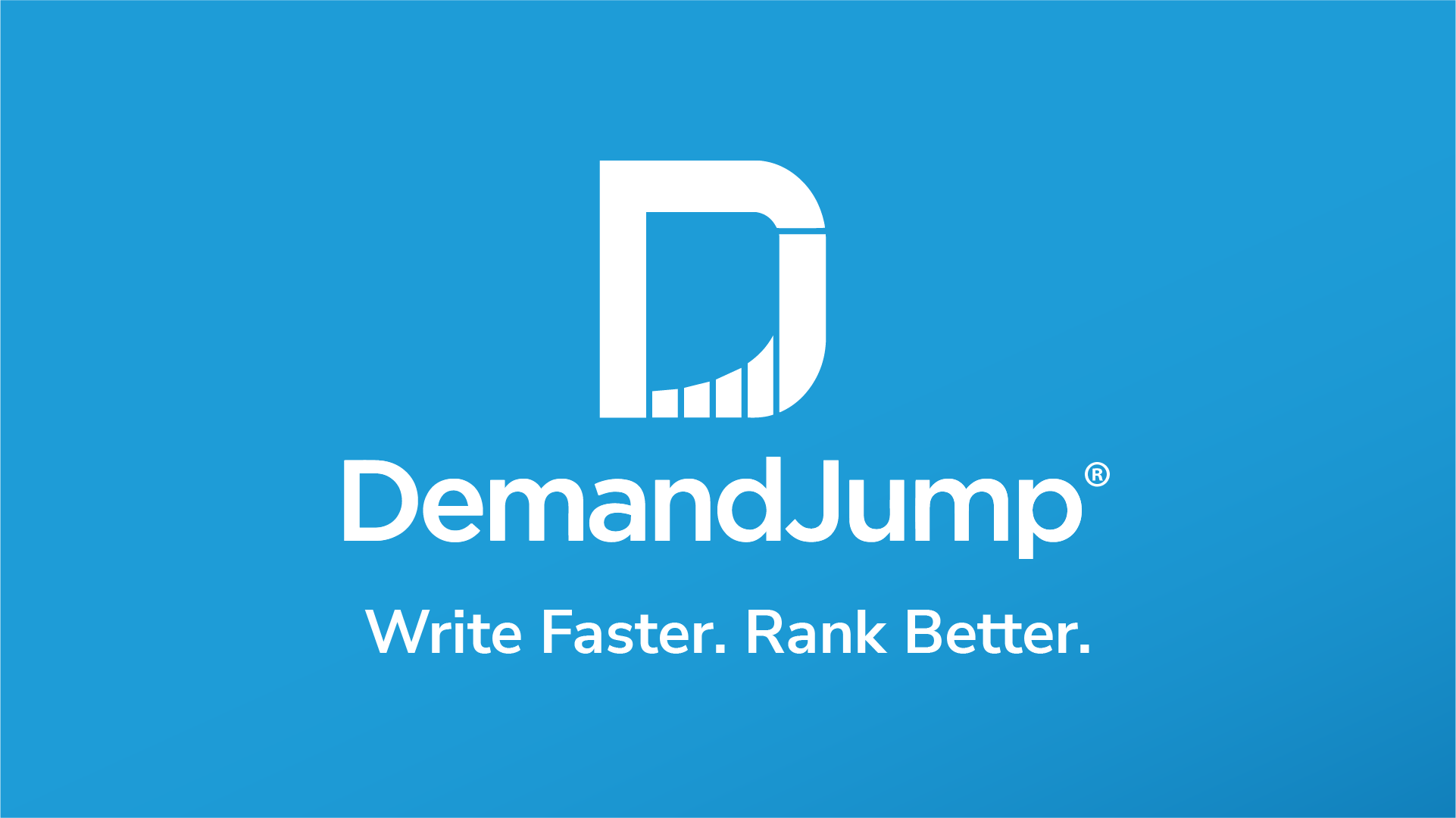See DemandJump in Action
By embracing DemandJump's approach to SEO, we have been able to increase our organic rankings within just 2 weeks of implementing recommendations. This helped us see a 22% increase in organic search month-over-month.
Robert Jacko Vice President Digital Marketing @ Homage
DemandJump has become a crucial extension of our marketing team, providing game changing insights to fuel and propel all aspects of our digital marketing efforts. The DemandJump platform is a must have, we are seriously impressed.
Tim Lavinder Director of Ecommerce @ Hotsox
We used to spend hours looking for insights in dozens of tools and reports. Now we log into one place to find out what customers are doing and how to meet them where it matters most.
Zach Roop Digital Marketing Manager @ Dometic
We use DemandJump recommendations as our digital to-do list. We love going in and seeing the recommendations and knowing what to do next.
JoLynda Wilson Marketing Director @ IWC
Trusted by Brands Around the World
DemandJump Product Suite
Eliminate wasted time and spend. With DemandJump's content, insights, and attribution
you will know with certainty how to win by aligning your marketing to actual consumer behavior.
Content
DemandJump assembles the world’s data, creates networks of customer touchpoints around any topic or keyword, and tells you exactly what content to write, keywords to include, videos to produce, and much more.
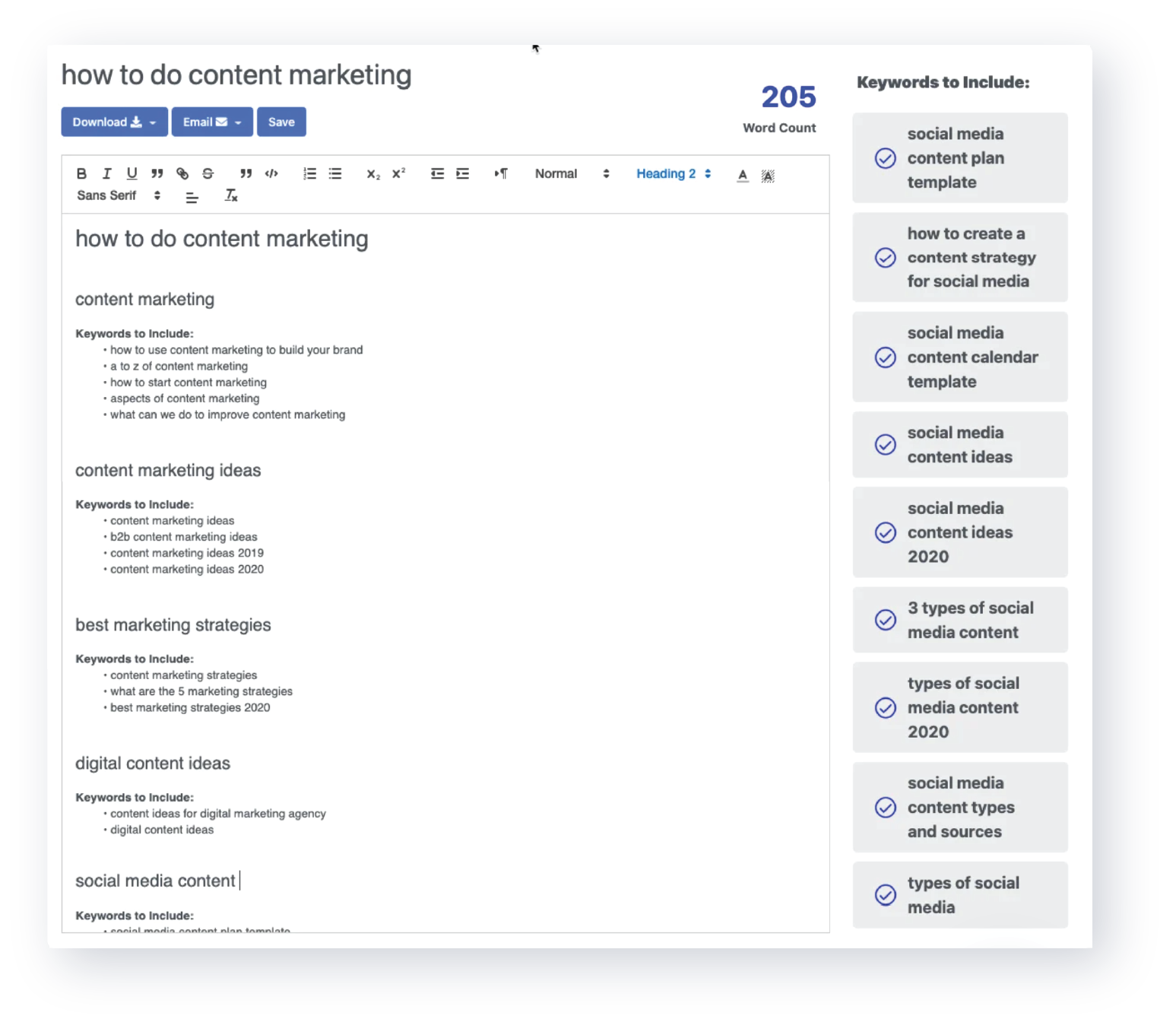
Insights
Find out what your target audience cares about for any category, product, or topic, with the click of a button. Gain market share by aligning your marketing efforts to actual customer behavior.
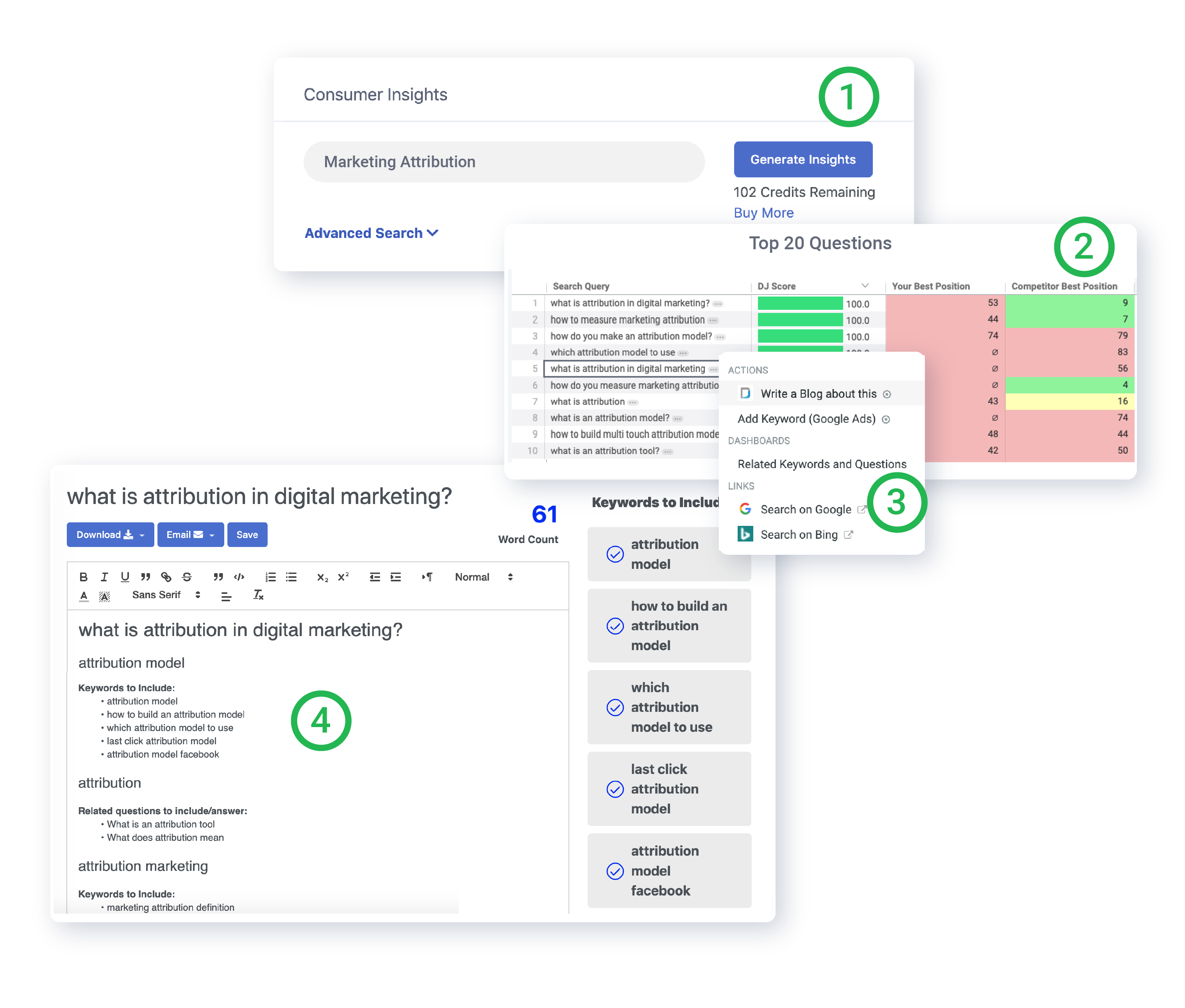
Attribution
Eliminate wasted time and spend. With DemandJump's automated account-based attribution solution you will know with certainty which efforts are driving ROI.
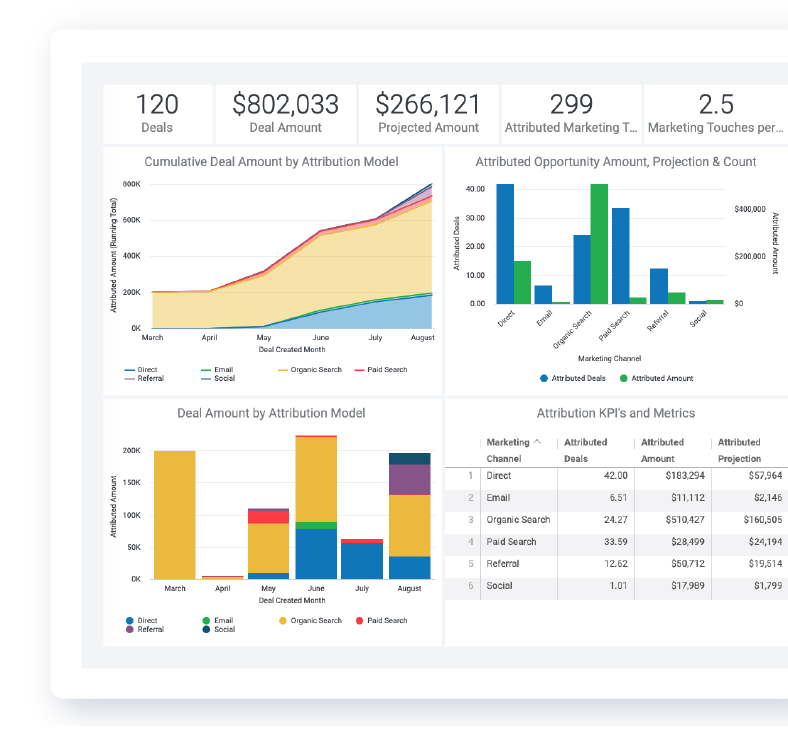
See a Demo of DemandJump
A data driven company is more than a business entity that uses analytics. It's a company culture that focuses on innovative business practices built on a solid foundation of evidence based data. It is a solid merging of science and business principles that firmly puts the customer's needs in the center of the equation.
The idea behind a data driven approach is that you can use verifiable information to improve every process. Most often, your data will inform how you create the customer experience. In today's world, the customer experience is the key to quality service and ongoing loyalty. By compiling and analyzing the information at hand, we can create products that are tailor-made for an existing need.
The data driven marketing approach uses the latest analytics in order to enhance current and future campaigns for more optimal results. As we move forward, we compile more and more data from a seemingly endless supply of channels and resources. The skill in using this information effectively becomes less about gathering data and more about understanding how to segment and organize information in order to arrive at important and actionable insights.
A data driven company is a company that embraces data driven technology as a means to create better processes, culture, and propel the overall mission of the company. The use of technology needs to be a thing that aids progress, rather than a thing that shareholders are reticent to adopt. In these businesses where data is employed readily in every facet of the workflow, the information it yields informs business and psychological decisions that make innovation more readily available.

How to create a data-driven company
Data driven technology is a catch-all phrase in today's world of apps and platforms to complete most of the company's workflow through each department. What does it mean and how do you create a truly data driven company?
The truth is that this is an ongoing process and one that needs a fair bit of training and commitment to initiate. A data driven company is one where every member of the staff and team uses tools that take full advantage of the data available. This is no small feat. Consider the number of people on staff who have an extensive data science background – it’s often the smallest percentage because this is a very technical field. What you’re essentially doing is asking all of your staff members to learn more about data science in order to make sense of the available data.
Data driven approach examples have one very important thing in common. The culture starts at the top. Executive officers and founders must buy into the process of continually learning to use new tools and data in innovative ways. It’s a trickle down approach and one where employees need to feel supported as they learn new skills that will ultimately help the company stay competitive, and also build their individual experience.
It is a massive commitment to build a data driven approach but it pays off in spades. Companies that use analytics on a wide scale maintain an edge over the competition and are better positioned for growth.
The importance of being data driven
Developing a culture that supports data driven business growth takes time and investments in technology that can include new tools, software, staff and training. For business owners, the benefits of data driven analytics need to show a marked ROI for the process to be worth it.
Today, we recognize easily how advantageous data driven processes are for every department and facet of competitive enterprises. Data is everywhere, which makes it even more important to understand how to segment and analyze the information you have at your fingertips. Otherwise, the sheer volume of information is more hindrance than help.
By using tools and analytics to process the data you collect from your marketing initiatives, you can streamline the process tremendously for far better reach and conversion. Data driven companies are finding that the information collected in marketing can be useful to sales and product development as well. In forward-thinking, data-driven companies, efforts are being made to connect all of the points in the data of large businesses so that each department functions with optimal efficiency.
For example, if the sales department has access to data collected during the marketing process, they’re better able to personalize communication with prospective clients. If billing has information gleaned from customer service, they have a better grasp on how to promote customer satisfaction in the revenue cycle management process.
In all of these examples, the end client is at the center of the process. Data compilation and analytics helps you answer key questions about your customers, their needs, and their pain points. With the advantage of this information, you can personalize customer care and predict needs with greater efficiency. These advantages translate to better service, higher quality care, increased conversion, and an edge in developing customer trust and loyalty.
Data analytics vs data analysis in your marketing strategy
The terms data analytics and data analysis are often used interchangeably, but they’re not exactly the same thing. Data-driven analysis methods use information gleaned from data analytics.
In more plain terms, data analytics is the information itself. Google analytics, for example, compiles all of the information from your website visitors. The data driven analytics refers to the information and sometimes to the tool you’re using to gather that information.
Data analysis is how you make sense of the data you’ve gathered through tools and analytics. Some of data analysis can be accomplished through the tools. You can set parameters to record set actions and even to respond to visitor movements. The art of data analysis is the ability to examine the analytics and find actionable insights that inform your process.
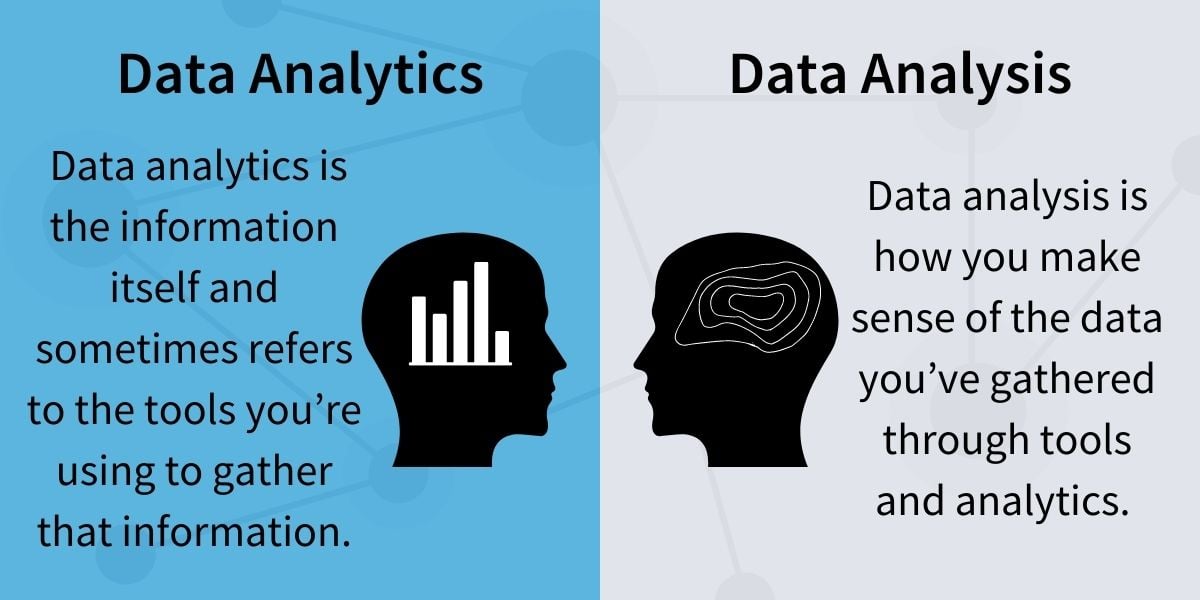
Take the example of launching a social media marketing campaign. In your initial research, you find that a large part of your market exists on Facebook and Twitter, so your campaign focuses on those two platforms. Using your analytics, you find markedly higher response rates from the campaign on Facebook. However, you find that a higher percentage of conversions come from your Twitter campaign. Those are the analytics. Your analysis would seek to answer the question of why. There might be a few theories and ways to optimize channel performance or to increase conversions. For instance, it may be that the messaging was more targeted on Twitter. It may also be that your reach on Twitter was smaller but included more of your ideal audience.
There may be other variables, as well. For instance, the audience on Facebook may need a longer nurturing stage than those on Twitter. In analyzing the data, you would look at demographics and differences in the audience base to see if there are possible changes in the campaign to improve the ROI.
Data analytics and analysis are equally important in the process. Data driven analytics allows you to compile and segment your information, while analysis offers you actionable insights to improve your marketing campaigns.
How to use data analytics tools and techniques
Data driven technology is only useful if you understand and can implement change from the information you’ve compiled. That’s where data analytics tools and techniques come into play. Marketers use a wide variety of tools and platforms to help them gather the right data and generate reports which then inform their decision making.
Online marketing is ready made for data analytics because all of the information is captured and this is certainly a large portion of the process. But smart marketers are also using content management systems that allow them to capture all communication points between their customer and the brand. These tools might include digital capture software to allow office staff to capture written and email correspondence, as well as surveys and touch points in brick and mortar stores.
Retail sales, for instance, have developed protocols that have cashiers capturing email addresses and other data in order to upsell customers and add them to the marketing cycle. Smart marketers are coming up with interesting ways to connect all of the interactions between customers and the brand.
This data can then be used in multiple ways. For the individual consumer, it helps the marketing department personalize messages to build loyalty and strengthen communication. For the business as a whole, the information allows for a fuller picture of marketing performance, individual campaign performance, and conversion rates. The data can then be used to find pain points and flaws in the current process as well as highlighting areas where staff excels.
This process offers a constant way to improve business processes as markets and customer needs change.
Some of the tools that marketers use to reach these massive results include marketing automation tools, such as Hubspot, Marketo, or Salesforce. Individual social media platforms offer their own analytics which can be integrated with cross-channel analytics solutions that marketers use to offer a fuller picture of the campaigns on different channels. Marketers also use web property analytics, email campaign analytics, and data gathered from customer surveys and in person communication.
What are data driven insights?
When discussing actionable uses for analytics, data driven insights meaning can often be confusing. Data driven insights are facts or pieces of information about the customer which are true and verifiable. But they are not usually set data points. Finding that a segment of your audience is 35 and female is not an insight. Finding that your 35 year old female audience members are culturally invested in a female empowerment movement might be an excellent insight.
Data driven insights are the facts that you find after analyzing the data. That data might and often comes from a wide variety of sources. You might reference your own marketing attribution, or you might use third party data released by large marketing or government agencies. Combining that data with internal data may give you an insight you didn’t readily know.
Insights are new pieces of information. You find them by asking questions about the current issue you’re facing in your marketing process. For instance, you may be wondering how to improve social sharing of your brand and messaging. You would start by dissecting the followers you have and what they do share. You might also look at competitors to note where they’ve succeeded. Your insight might be found in data that a large percentage of this core group shares a specific type of post.
Marketers today look for insights that can better inform their understanding of the customer and their needs so that they can personalize care to a higher level.
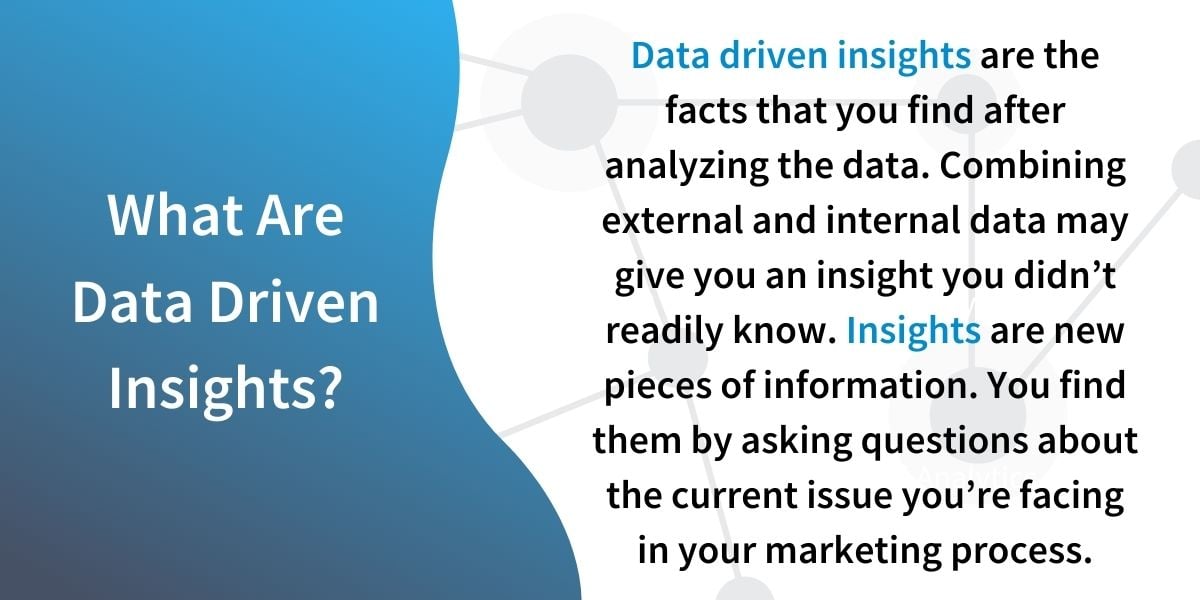
The benefits of data driven decision making
Data driven decision making examples can be found in every part of business, from predicting trends and future profits to product development and more. Business owners, board of directors, and others in executive positions always used all of the information at their disposal to make decisions. In the past, this information often came from reports and tedious market research that had to be manually compiled.
Today, we have access to data at our fingertips pertaining to virtually every aspect of the workflow for the day, week, year, and history of some companies. Added to that, there is the availability of third party data and information pertaining to the market and competitors.
The benefit of data driven decision making is that it gives you the ability to collect and analyze digital marketing data as part of your due diligence before making decisions. Because data is available all the time, you can reassess your data and your decisions on certain aspects of your management. Decisions can be reassessed and pivots can be made in the direction of business or certain aspects of business based on how the data indicates those decisions are paying off.
In marketing, decisions are made based on the data collected through the course of a campaign or on a larger scale about the customer base. Once any campaign launches, the analytics are regularly analyzed so that benchmarks can be determined and changes can be made when necessary. This course allows for more flexibility and a higher ability to cater to the market.
Characteristics of a data driven culture
A data driven organization is one that prioritizes the best practices and uses of analytics in culture and operating habits. When you look at well known data driving organizations, such as Google and Apple, you can see that the influence starts at the very top of the company and is felt in every position.
Not all organizations have employees that are quite as data savvy. One of the main obstacles in data driven strategic planning for a whole organization is in getting all of the staff members to buy into and use the protocols effectively. This is a major commitment for all personnel because not every member of staff will have a background in data science.
Data driven strategy consulting can help companies develop a data driven culture and aid the executives and management in finding ways to bring all employees on board. This type of culture will allow employees to grow more secure in their data analytics tools and analysis.
Training options for these types of functions can be time consuming but it will also mean greater skill sets for employees, more employee loyalty, and a better overall company culture. Once the organization has reached a place where all aspects of the culture are data driven, decisions and projections are far more efficient and accurate. Productivity and profitability are higher in a data driven organization, as well.
Analytics marketer and data analytics jobs
A data analytics career is an exciting option for those interested in data sciences with a high degree of proficiency in math. The career field is growing exponentially and there is a great deal of job security for those who complete the education and gain the right experience to enter the field as a digital analyst. The median salary is well above average and there is room for growth because virtually every facet of business and industry needs data analysts.
Typically, to get hired as a data analyst, you’ll need a minimum of a bachelor’s degree. A more advanced degree can result in a higher position and better pay scale. A career as an analytics marketer, for example, might be excellent for someone with a background in both marketing and data science.
Most entry level jobs in this field will require a degree and some experience. Many students take intern positions during their studies in order to get the necessary experience prior to entering the field. Once in the field, many professionals keep advancing their education in order to reach higher positions in the company.
Data analysts are needed in every industry and in virtually all departments. You might consider a set field, such as finance, with a data science minor in order to better prepare for the analyst position in the accounting department or within the finance industry. Typically, the analyst will work with the data, run reports, and make recommendations as to how to use the information gained.
These are interesting careers with room for growth. Because technology changes so rapidly, data analysts should expect to keep updating their education on a regular basis in order to stay current on new tools and technology.
Resources
Channel Optimization
Consumer Behavior
Consumer Insights
Consumer Insights and Analytics
Competitor Analysis Tools
Content Marketing
Content Strategy
Cross-Channel Analytics
Customer Insight Research Techniques
Customer Journey Map
Market Intelligence
Marketing Analytics Techniques
Market Research
Marketing Attribution
Opportunities of Internet Marketing
Types of Consumer Insights




